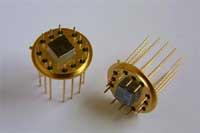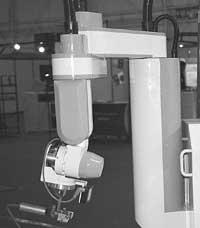Gas Leak Detector
2002/12/16 Atxotegi Alegria, Uhaina - Elhuyar Zientziaren Komunikazioa
The research being carried out by CEIT and Gas de Euskadi aims to detect gas leaks in homes. To do this, they have developed a system based on microsensors: CEIT researcher Gemma García Mandayo and some of her colleagues have analyzed the techniques of creating tin oxide microsensors. In fact, the growing use of natural gas in homes, the upcoming launch of new legislation to detect carbon monoxide in homes and the growing number of consumers demand gas leak detectors.

To prevent gas leaks and prevent the generation of carbon monoxide it is essential to have adequate facilities and good maintenance of gas appliances, according to current regulations. However, the systems developed by CEIT researchers with the aim of improving safety, serve to reduce the risks of explosions that can cause methane leaks (the main component of natural gas) and poisons derived from the inhalation of carbon monoxide (gas without color or smell).
Given the characteristics of carbon monoxide, it is impossible to detect this component without sensors. Good ventilation in areas where combustion occurs is a measure to take into account, but for various reasons, the risk of accumulation of this gas is always high density, without colors or smells. According to the Journal of the American Medical Association, carbon monoxide is the deadliest element of accidents in the United States. The
gas microsensor that CEIT researchers are designing has incorporated a heater so that the tin oxide layer reaches 300ºC (carbon monoxide can be detected from this temperature).

Gai honi buruzko eduki gehiago
Elhuyarrek garatutako teknologia






